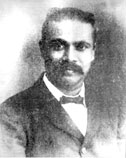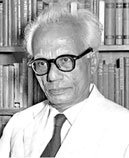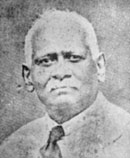Literature promotes reading
by Vijaya Jayasuriya
 |
 |
 |
| W.A.de Silva |
Martin
Wickremasinghe |
Piyadasa
Sirisena |
Having read Lionel Wijesiri's article on reading in the Sunday
Observer of October 14, I considered it remiss of me not to contribute
my mite to the discussion. He had expatiated upon a highly topical issue
that tends to heavily tell upon the literacy levels of our future
generation.
'Reading maketh a full man' is an age-old adage and equally true is
its diametrically opposite. 'Lack of reading makes one a dull boy'! This
indeed is, whether we like it or not, already happening around us, the
evidence of which galore if you just take a casual look at how our youth
conduct themselves, most of all, performing in numerous quiz programs
shown on TV.
When asked about a book written by an English writer they trot out
the name of a Russian author and vice versa. The saddest part of it is
that when queried 'Who wrote Deiyanne Rate' (by W.A. Silva) they gave
the absurd answer 'Martin Wickremasinghe'
Sad commentary
Not having a knowledge of or even having an acquaintance with
literary works by renowned writers in one's mother tongue is indeed a
sad commentary on a country's younger generation, ostensibly claiming
high rates of literacy!
Advantages of reading are multifarious. It makes one a knowledgeable
person who can also express eloquently one's ideas and opinions in any
situation particularly in writing. Instead of being narrow-minded,
people who are widely read naturally become 'opinion leaders' in a
society who turn out to be a blessing to their fellow beings.
What made our present generation weak in reading is clearly the
mammoth folly perpetrated by our educationists during the 1970s when
extensive changes in the school curricula were made.
The worst of the phenomenal blunders is the removal from the school
curriculum the subject of Sinhala Literature and making it just an
insignificant part of the subject 'Sinhala Language' represented by a
passage or a poem from some book by a Sinhala writer, or a Tamil one in
the case of Tamil children.
Great delight
It is with great delight and gratitude that we septuagenarians still
remember how much we enjoyed and learnt from the excellent literature
books that were our class texts during our early secondary level and
even in prior classes. I still remember how we were taught Rohini by our
Sinhala master when we were in the 5th standard.
He was such an aficionado of literature that he in each of the
Sinhala periods with us read out a section of the historical novel by
the doyen of Sinhala Literature, Martin Wickremasinghe, and even went on
to act it out using his whole physique while holding the book in his
left hand.
The clever teacher, a great cognoscenti of literature happened to be
the source of our deep interest in reading literature avidly looking for
the Nava Nalu Rasa (Nine types of feeling gained from reading such
texts), such as joy, sorrow, heroism and dejection.
Thus, during the ages, 10 to 15 just before the O/Levels we had the
good fortune of reading the wide range of novels and short story books
written by leading writers such as Wickremasinghe (Gamperaliya) W.A. de
Silva (Hingana Kolla) Piyadasa Sirisena (Jayatissa saha Roslin), T.B.
Ilangaratne (Ambayahaluwo) and many others.
Library
Our library was a glass-paned single almirah kept in the verandah of
our village temple where the Loku Hamuduruvo being a good Samaritan had
stocked hundreds of books on each of the shelves.
Each Sunday afternoon soon after the meeting of the Buddhist Youth
Society we visited the library where we were lent two books for the
whole week with a nominal charge of 10 cents a month.
At school we had Sinhala Literature as a subject on the time table,
four periods each week, while we were taught two prescribed books in
fiction and poetry. Geethanjali was a collection of poems by a wide
group of poets ranging from Totagamuwe Sri Rahula Thera through
'Weththewe Thera' to Gajaman Nona.
At senior secondary levels we had to make an in-depth study of poems
by modern writers such as P.B. Alwis Perera, Meemana Premathilake,
Sagara Palansuriya, Wimalaratne Kumaragama, Ven. S. Mahinda and Munidasa
Kumaratunga compiled in a range of books called Naveena Padya edited by
Reipiel Thennakoon, another renowned poet.
The most important aspect of the study was that we could learn
various trends and traditions of poetry and fiction while making an
analysis of their literary techniques.
It is in this way that we were able to sit the O/Level examination in
two separate subjects i e- Sinhala Language and Sinhala Literature and
pass in both with flying colours.
Literary traditions
The greatest advantage of learning Sinhala (indigenous) literature
was to master the various literary traditions and theories such as
theme, characterisation, symbolism and organisation in fiction and
figures of speech (similes and metaphors), allegory, rhythm and rhyme in
poetry.
The mastery of fundamentals in Literature provided us with a
spring-board to make an easy transfer of that knowledge for the study of
literature of other (alien) languages such as English and French even at
university level.
The study of the literature of one's own language thus naturally
proves to be a blessing for students in their higher studies, for, it
bestows on them through consistent practice of reading a good mastery of
writing skills as well which is indispensable for examination purposes.
Improving the reading habit in our younger generation should thus
start at almost primary levels in school, introducing little chunks of
text which then should systematically expand into the subject of
literature quite apart from the subject of language.
Creating an interest in reading literature will be the sole aim of
this program which thereby will gradually extend to other forms of text
as the fluency in reading improves automatically.
While schools should have their 'paper stands' in a tolerably quiet
place so that students in their free periods can resort to some random
reading. Newspapers could run items for light reading if possible on a
daily basis, rather than weekly supplements as happens nowadays.
The book publishers have to be encouraged to provide to the reading
public the now defunct works by our past writers which will enjoy a
considerable demand as school texts as well. It is indeed a sad state of
affairs that these books have been relegated to the limbo of oblivion
whereas they hold a great potential of helping our students improve
their reading skills.
However, it should be stressed that the ball is currently in the
education authorities' court to decide what is needful - the
introduction of Sinhala Literature as a subject in the school curriculum
and equally important, ensuring that there are teachers for this purpose
qualified and experienced to carry out their duty conscientiously. |


